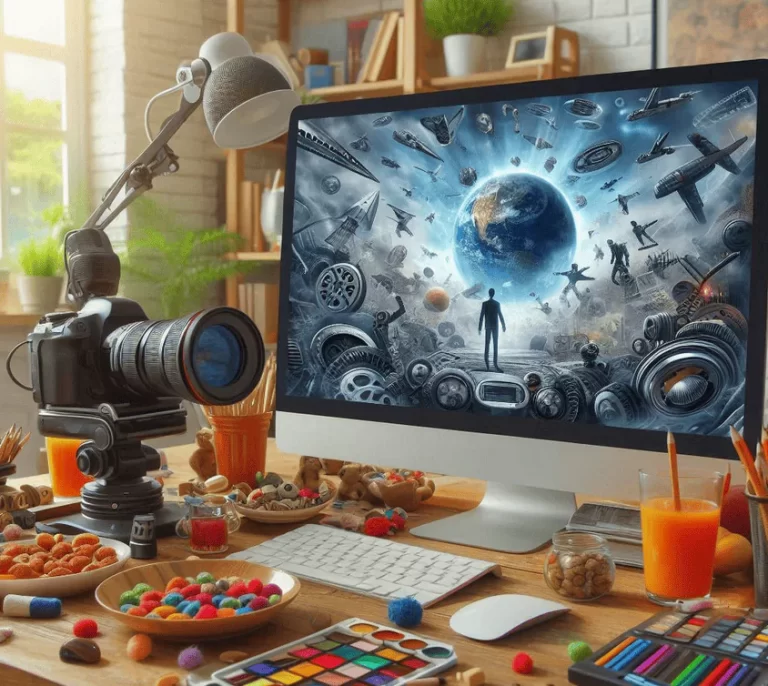
Photo Editing Photography is often considered the art of capturing moments, but its true power lies in what comes after—the ability to refine, transform, and elevate those moments through photo editing. This creative process transcends mere correction, serving as an alchemy that turns raw images into powerful visual narratives. As technology evolves, so does the potential of photo editing, offering endless possibilities to blend artistry and precision.
This article explores the nuances of photo editing, from its foundational principles to advanced techniques, highlighting how it can empower photographers to craft their unique visual voice.
The Purpose of Photo Editing
At its core, photo editing bridges the gap between the image you capture and the story you want to tell. Even the best cameras cannot replicate the intricacies of human vision. Shadows may obscure detail, highlights can appear blown out, and colors often fail to reflect the mood of the moment. Editing addresses these shortcomings, allowing photographers to align their images with their intentions.
Beyond technical corrections, photo editing serves as a platform for creative expression. It allows photographers to evoke emotions, establish themes, or experiment with aesthetics. From subtle enhancements that perfect a natural look to dramatic overhauls that redefine a scene, editing is where imagination takes center stage.
The Essential Tools of the Trade
Mastering photo editing begins with assembling the right tools. These include both hardware and software, working in harmony to achieve professional-grade results.
1. Software: Your Creative Canvas
Choosing the right software is critical, as each platform offers unique strengths. Here are the most popular options:
- Adobe Lightroom: Known for its user-friendly interface, Lightroom excels in managing large photo libraries and performing global edits like exposure, contrast, and color grading.
- Adobe Photoshop: The gold standard for advanced photo editing, Photoshop provides unparalleled control for pixel-level edits, compositing, and retouching.
- Capture One Pro: Designed for professional photographers, this tool offers exceptional tethered shooting and precise color grading capabilities.
- Affinity Photo: A robust, cost-effective alternative to Photoshop that caters to creatives looking for versatility without a subscription.
- Luminar Neo: This AI-driven software simplifies complex edits like sky replacement and background removal while maintaining a high-quality output.
2. Hardware: The Backbone of Precision
Investing in reliable hardware enhances your ability to edit with accuracy and efficiency.
- High-Resolution Monitor: A color-accurate display is essential for judging tones, hues, and contrast. Consider monitors with wide color gamuts, such as those supporting AdobeRGB or DCI-P3 standards.
- Graphics Tablet: A tablet, like a Wacom Intuos, provides tactile precision for detailed work, such as retouching or masking.
- Calibrators: Devices like the X-Rite i1Display calibrate your monitor to ensure consistent color accuracy across devices and mediums.
- Powerful Computer: For smooth performance, use a computer with a fast processor, ample RAM, and a dedicated GPU to handle high-resolution files.
The Foundation of Great Editing: Mastering the Basics
Before diving into advanced techniques, it’s essential to master the basics of photo editing. These foundational skills create a strong starting point for any creative endeavor.
1. Cropping and Composition
Cropping is more than removing distractions; it’s about enhancing balance and guiding the viewer’s eye. Straightening horizons and using compositional rules, like the rule of thirds, can drastically improve an image’s impact.
2. Exposure Adjustments
Exposure is the heart of photography. Correcting underexposed or overexposed images restores detail and balances light across the frame. Use the histogram as a guide to maintain tonal balance.
3. Color Correction and White Balance
Colors carry mood and meaning. Correcting white balance ensures natural tones, while adjusting vibrance and saturation can amplify the scene’s energy. Subtle tweaks in hue can make skies bluer, foliage greener, or sunsets warmer.
4. Contrast and Clarity
Adjusting contrast and clarity brings depth to an image. These adjustments highlight textures, emphasize shadows, and create separation between subjects and their surroundings.
5. Noise Reduction and Sharpening
High ISO settings or low-light conditions often introduce noise. While noise reduction smooths unwanted grain, sharpening refines edges, ensuring your photo retains crisp details.
Exploring Advanced Photo Editing Techniques
Once the basics are second nature, advanced techniques enable deeper creative exploration. These methods elevate your edits to a professional level.
1. Dodging and Burning
Dodging brightens specific areas, while burning darkens others. This technique mimics traditional darkroom practices, creating dynamic lighting that guides the viewer’s gaze and adds dimension.
2. Frequency Separation
Ideal for portrait photography, frequency separation separates texture from color. This allows for meticulous retouching, such as smoothing skin or correcting blotchy tones, without compromising details.
3. Layer Masks and Blending Modes
Layer masks in Photoshop allow for non-destructive editing, letting you apply changes selectively. Blending modes further expand creative possibilities by altering how layers interact with one another.
4. HDR (High Dynamic Range) Editing
HDR combines multiple exposures to achieve a balanced image with rich details in both highlights and shadows. This technique is especially effective in high-contrast scenes like sunsets or interiors.
5. Color Grading
Color grading shapes the emotional tone of an image. By adjusting the hues in shadows, mid-tones, and highlights, you can achieve cinematic effects, warm vintage aesthetics, or cool futuristic vibes.
The Role of AI in Modern Photo Editing
Artificial intelligence has become a game-changer in the world of photo editing. By automating repetitive tasks, AI allows photographers to focus on creativity.
- Automated Adjustments: Tools like Lightroom’s Auto Tone or Photoshop’s neural filters analyze your image and suggest corrections.
- Sky Replacement: AI-powered features in software like Luminar Neo make replacing dull skies a breeze.
- Content-Aware Fill: Photoshop’s AI can intelligently remove objects from images without leaving noticeable gaps.
- Portrait Enhancements: AI tools now refine skin, brighten eyes, and even adjust facial features with impressive realism.
While AI simplifies workflows, the human touch remains irreplaceable. Use these tools as complements, not substitutes, for your artistic instincts.
Common Pitfalls and How to Avoid Them
Even seasoned photographers can make missteps in photo editing. Here’s how to steer clear of common pitfalls:
- Over-Editing: Heavy-handed adjustments, such as excessive sharpening or over-saturated colors, can make photos look artificial. Aim for balance and subtlety.
- Inconsistent Styles: A lack of uniformity in editing style, particularly across portfolios or social media feeds, can dilute your brand. Develop a consistent approach that aligns with your vision.
- Ignoring Calibration: An uncalibrated monitor can misrepresent colors, leading to inconsistencies in prints or on other screens. Regularly calibrate your equipment.
Finding Your Creative Voice Through Editing
The art of photo editing lies in personal expression. Experimentation and intuition play a crucial role in developing a style that reflects your unique perspective. Explore different approaches, draw inspiration from other photographers, and push the boundaries of traditional editing to discover what resonates with you.
Workflow Tips for Efficiency
An efficient workflow not only saves time but also ensures consistent quality.
- Shoot in RAW: RAW files retain more image data, offering greater flexibility during editing.
- Use Presets and Actions: Save frequently used adjustments as presets in Lightroom or actions in Photoshop to streamline repetitive tasks.
- Non-Destructive Editing: Work on copies or use adjustment layers to preserve the original image.
- Organize Your Library: Tag and catalog images for easy retrieval, especially when working with large collections.
Staying Inspired in the Editing Journey
Creativity thrives on inspiration. Engage with photography communities, study the works of renowned photographers, and experiment with new editing techniques. Challenges, such as recreating iconic looks or testing unfamiliar tools, can spark fresh ideas and refine your craft.
Conclusion: Embrace the Journey of Photo Editing
The journey of photo editing is one of discovery, creativity, and transformation. From correcting flaws to crafting visual masterpieces, editing empowers photographers to breathe life into their images. Armed with the right tools, techniques, and a spirit of exploration, you can turn every photograph into a compelling story that resonates deeply with its audience.



